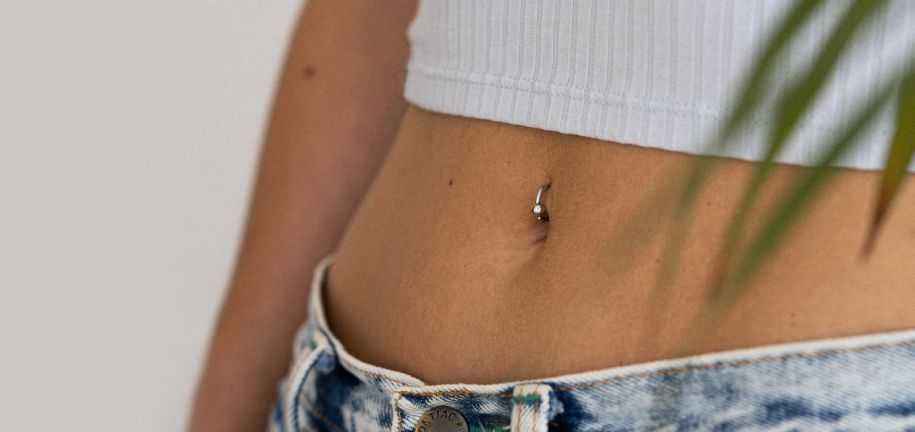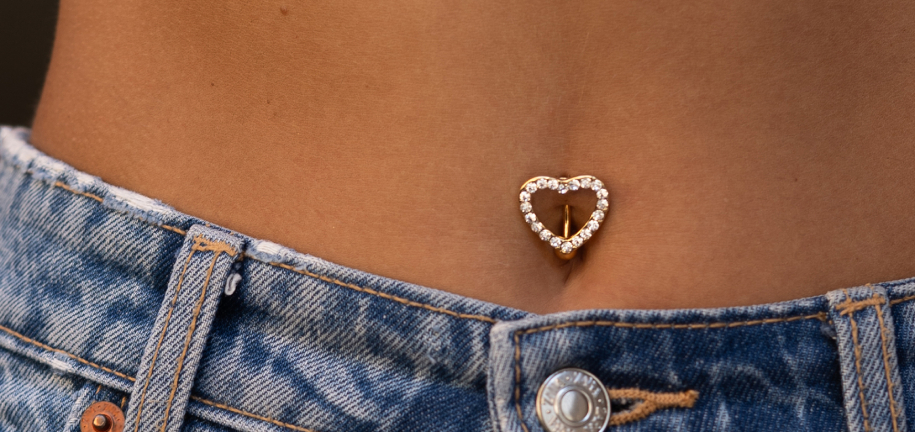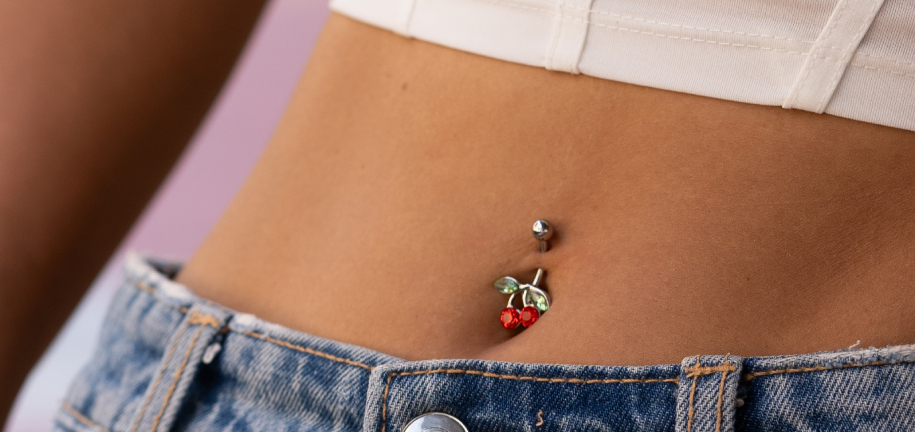
All About Belly Button Piercings
The Belly Piercing Healing Process: Stages, Timeline, and Expert Care Tips
When you get a new piercing, proper aftercare during the healing process is essential. A piercing wound is sensitive, so don’t take it lightly if you want that gorgeous look. Let’s talk about how to stay on top of your belly piercing to avoid complications.
What are the Stages of Healing?
First is the inflammation stage. For the first 24-48 hours, your piercing swells up, turns red, and secretes lymph fluid, which circulates to remove inflammatory debris from the wound.
Next is the proliferation stage. For the next 4-24 days, your piercing develops granulation tissue, which protects against microbes and helps establish new tissue and blood vessels. Granulation tissue is pinkish-red, moist, and grainy but soft (try not to touch it).
Lastly, the remodeling stage. Depending on many conditions, like your general health, this stage can last from 21 days to 2 years. The soft collagen type III formed during proliferation is replaced with collagen type I, making strong new cells.


What’s the best aftercare and healing time?
Clean your piercing twice a day: once with water and mild PH neutral soap (no harsh chemicals and perfumes) and once with a saline solution to draw out excess fluids. This is especially important at the inflammation stage, so do this at least for the first week, but ideally until the piercing is fully healed. The saline solution has to be sterile, ideally use a professional product instead of making it yourself.
To minimize the risk of infection, always wash your hands thoroughly before touching your piercing, and only touch it during cleaning. It’s impossible to guarantee it won’t get infected, but do your best to lower the odds.
Sunlight breaks down collagen, so keep your belly covered when outdoors. This constant contact with the fabric makes careful daily cleaning even more vital for a belly piercing.
The belly moves a lot, so wear clothes that won’t snag, scratch, or press tightly. Wear smooth, loose fabrics, especially during proliferation when a soft crust forms. Ideally avoid physical activities that may reopen the wound, like swimming, for at least 9 months.
We recommend titanium for the first jewelry, as it is nickel-free and light. Don’t remove or change it for at least 3-6 months, even after the wound seems fully healed. The internal tissue may still be rebuilding.
Before changing your belly ring, carefully check if all redness, swelling, discharge, and tenderness have completely subsided. If removing the jewelry hurts at all, or if it doesn’t move freely, it’s not time yet. Wash your hands and piercing first to reduce the infection risk in case the piercing is not fully healed.
What are the usual healing issues?
Follow our guidelines to support your body’s natural healing process, but remember that they’re only guidelines. Every person is different, so pay attention to your own healing experience and seek professional help when needed.
Watch out for:
- Thick, yellow pus (discharge should be watery and clear or white)
- Throbbing pain or heat (should be tender, not painful)
- Redness and swelling beyond the navel (should be local and reduced within 2 weeks)
If you suspect an infection, consult a doctor for proper treatment.


If your body rejects the jewelry, consult your piercer before attempting to remove it to avoid further damage and scarring. A scar could make it harder to try again for another belly piercing.
There are many myths online about ways to speed things up, but we’re afraid there are no shortcuts to healing a piercing. Like most good things, it takes time and patience, and it’s totally worth it. Keeping clean and calm while staying healthy is the fastest track to healing. With love and care, your new belly piercing will truly shine - just like you.

